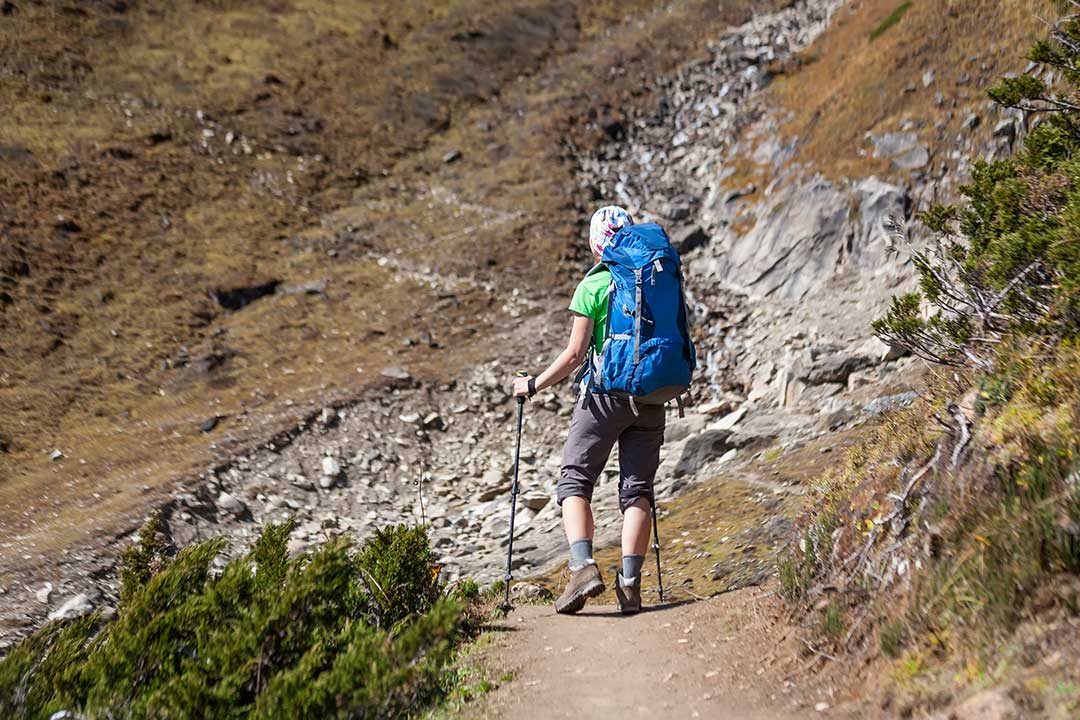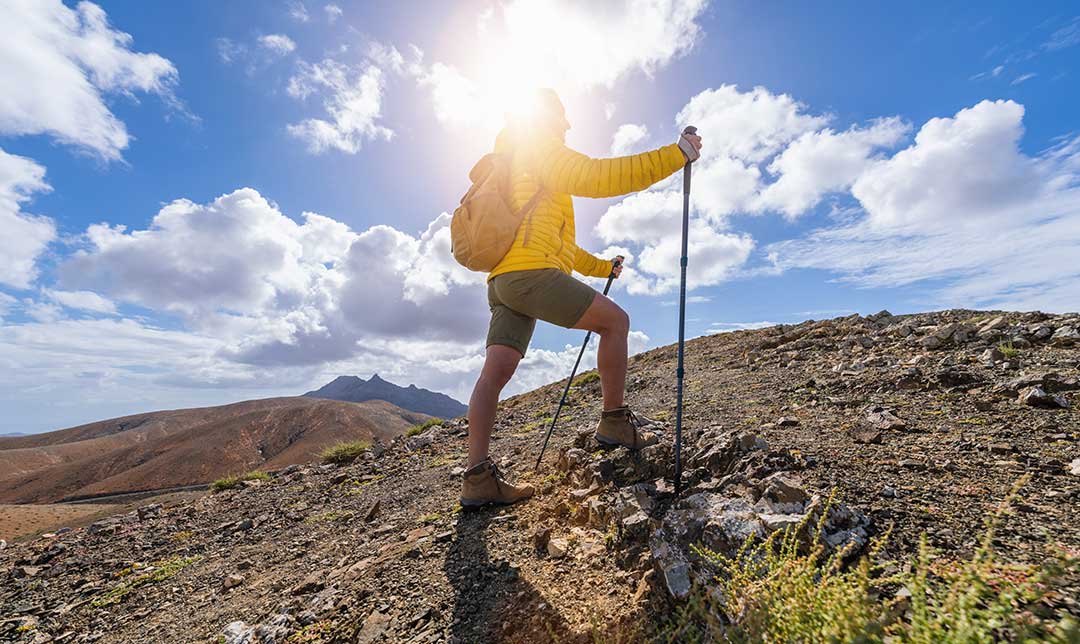Heading to the base of Mt Kilimanjaro armed only with a melody in your heart and aspirations in your pocket might sound romantic, but the reality might catch you off guard.
Embarking on a trek without prior preparation or a decent level of fitness is no easy feat. Let's face it - trekking is demanding even with adequate training. The currency for an unforgettable trek is sweat. Worn-out calves and throbbing quadriceps become badges of honor.
Yet, the payoff is unparalleled. You're rewarded with some of the most unspoiled, breathtaking scenery on Earth. And guess what? The more you prepare for your monumental journey, the smoother it will unfold.
Before doing any kind of training for a trek, consult first your physician or health professional to assess your overall health condition and avoid any injuries.

How To Train for a Trek
You don't need to possess the endurance of an Iron Woman or Man to conquer Everest Basecamp or summit Mt Toubkal. Trekking is accessible to everyone. It simply requires a sensible approach and some effort. Here are some of our top tips for training for a trek:
Start walking.
How to prepare for a trek? You need to engage in long walks. Begin with shorter distances and gradually increase the length to match the duration of your upcoming trek. Initially, allow a day of rest between each walk to allow your body to recuperate. However, as your fitness improves, incorporate back-to-back sessions daily to enhance your endurance, vital for the relentless demands of a multi-day trek without rest days. Ideally, aim to comfortably walk for four to six hours before embarking on your journey.
Do leg workouts as part of your cardio routine.
In addition to incorporating long walks into your training regimen, it's essential to include leg-based cardio exercises in your daily routine. Cycling is excellent for strengthening leg muscles, but sports like soccer, football, squash, and swimming are equally beneficial. If you prefer gym workouts, diversify your routine by combining spin classes or cycling intervals with squats and lunges, progressively increasing the weight for greater effectiveness. It will help enhance your overall fitness and endurance for the journey ahead.
Climb the stairs every chance you get.
When training for a trek, stair climbing becomes another effective way to strengthen your calves and quads. Go for the stairs over the elevator or escalator at your workplace or the train station to incorporate this beneficial exercise into your daily routine.
Observe proper form when walking.
Though you've been walking since around the age of one, it's crucial to pay attention to your walking technique and ensure it's correct. Focus on landing your heel first and then rolling onto your toe with each step, which aids in propelling you forward to the next step and minimizes the risk of painful issues like shin splints and tendon pulls. Maintain proper posture by walking with your head up, eyes forward, and shoulders level.
Vary your terrain and walk in all kinds of weather whenever possible.
While training for your trek, avoid focusing solely on level footpaths and roads since the terrain during your trek is likely to be different. Instead, train on surfaces resembling the trails you'll encounter, such as steep, rocky terrain for Everest or Kili, or muddy paths for Kokoda, to adequately prepare your feet, ankles, and knees for the strain they'll endure. Additionally, prepare for various weather conditions by walking in cold, windy, rainy, warm, and humid conditions whenever feasible as uninterrupted perfect weather for ten consecutive days during your trek is improbable.
Train with a walking pole.
When you're trekking on gravel trails or descending steep slopes, walking poles will be invaluable companions, relieving pressure on your knees downhill and providing extra support uphill. Integrate poles into your training routine to acclimate yourself to using them effectively.
Train with your backpack.

During most of our trekking expeditions, you won't be burdened with your main backpack, but you'll still require a compact daypack filled with necessities, such as your camera, snacks, sunscreen, water, and wet-weather gear. Therefore, throughout your days, weeks, or even months of training, ensure you're pushing yourself with a weighted bag. For an added challenge, consider loading your bag with a few extra items to make it slightly heavier than what you anticipate carrying during the actual trek. It'll make the trek itself seem like a breeze.
Never keep your tank empty.
Ensuring you're adequately stocked with water and food is crucial during a trek. Hydration is key. Nuts, dried fruit, muesli bars, and chocolate serve as excellent, quick sources of energy and protein. Keep a variety of these nutritious snacks in your daypack.
Additionally, bring along a reusable canteen for hydration. During your training regimen, aim to consume food and water 'on the go' as much as possible, allowing your body to acclimate to digesting during strenuous exercise, which is essential for the best diet to prepare for a trek.
Invest in quality hiking or trek clothes.
The gear and clothing you pack for your trek can significantly impact your experience, so it's crucial to go for lightweight and comfortable items that won't burden you along the journey.
Essential items to include in your trekking kit consist of comfortable and sturdy hiking shoes, ensuring they're broken in before hitting the trail, base layer clothing made of lightweight and breathable fabrics to wick away moisture, a backpack spacious enough to carry all essentials comfortably, rainwear such as a waterproof jacket and pants for protection against the elements, sun protection including sunscreen, sunglasses, and a wide-brimmed hat, along with other necessities like a flashlight, insect repellent, a medical kit, snacks, and a water bottle, tailored to the specific requirements of your trek.
For optimal sun protection during your trek, invest in sun protective wear from our All UPF collection, featuring UPF 50+ tops and bottoms designed to block the sun's harmful rays.
Invest in a good pair of kicks.
Your feet play a pivotal role during a trek, and keeping them in top condition doesn't require much effort. Start by investing in high-quality, water-resistant hiking boots that offer ample support and ventilation, and then break them in by wearing them everywhere—during training sessions, trips to the store, and even at work. The more you wear them in the weeks and months leading up to your trek, the better you'll avoid blisters, bunions, and lost toenails.
Additionally, ensure you have a few pairs of excellent hiking socks, preferably made of a wool/nylon blend, to wick moisture and keep your feet dry. For added protection against blisters, consider wearing two pairs of socks while walking. These practices are essential for effectively training for a trek and maintaining foot health.
Fall in Love With Nature in Your Trek
Embarking on a trek is a fantastic opportunity to immerse yourself in nature and test your limits. By considering these trekking tips, you can guarantee a safe and fulfilling experience. Follow the guidance provided in this article to ensure your trek is a success and filled with enjoyment. With adequate preparation, you'll be equipped to conquer any trail and savor the thrill of adventure.


